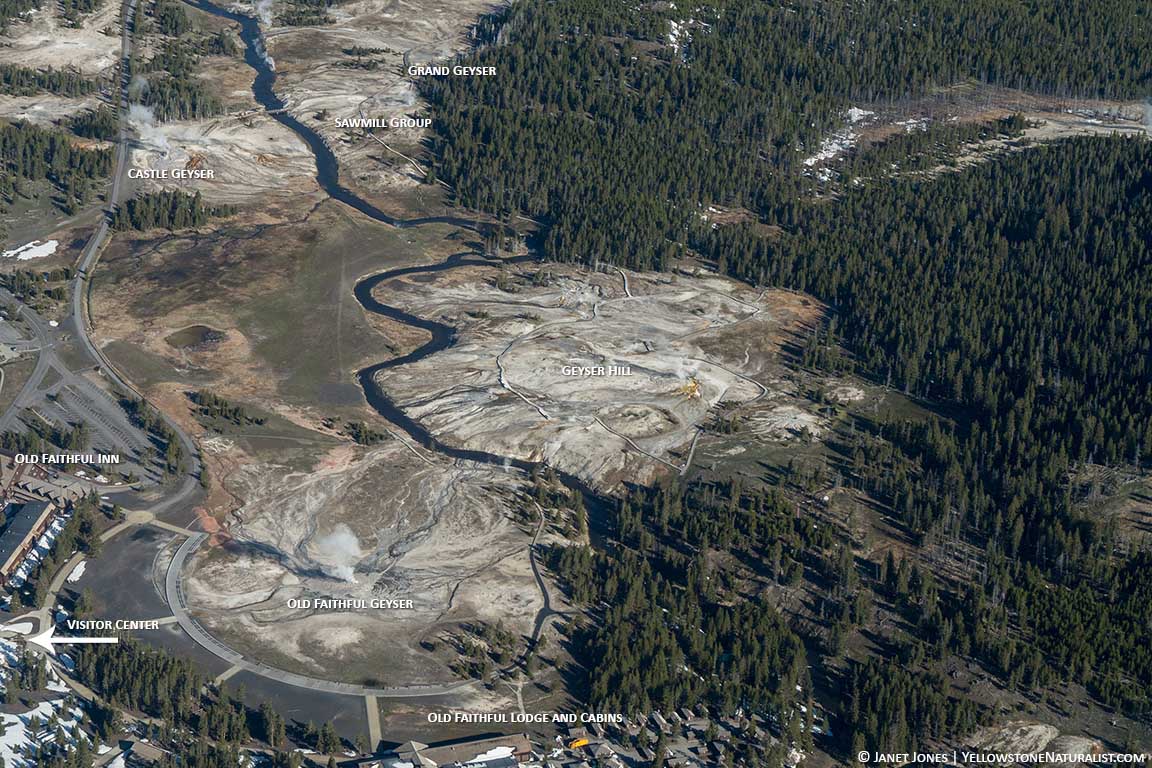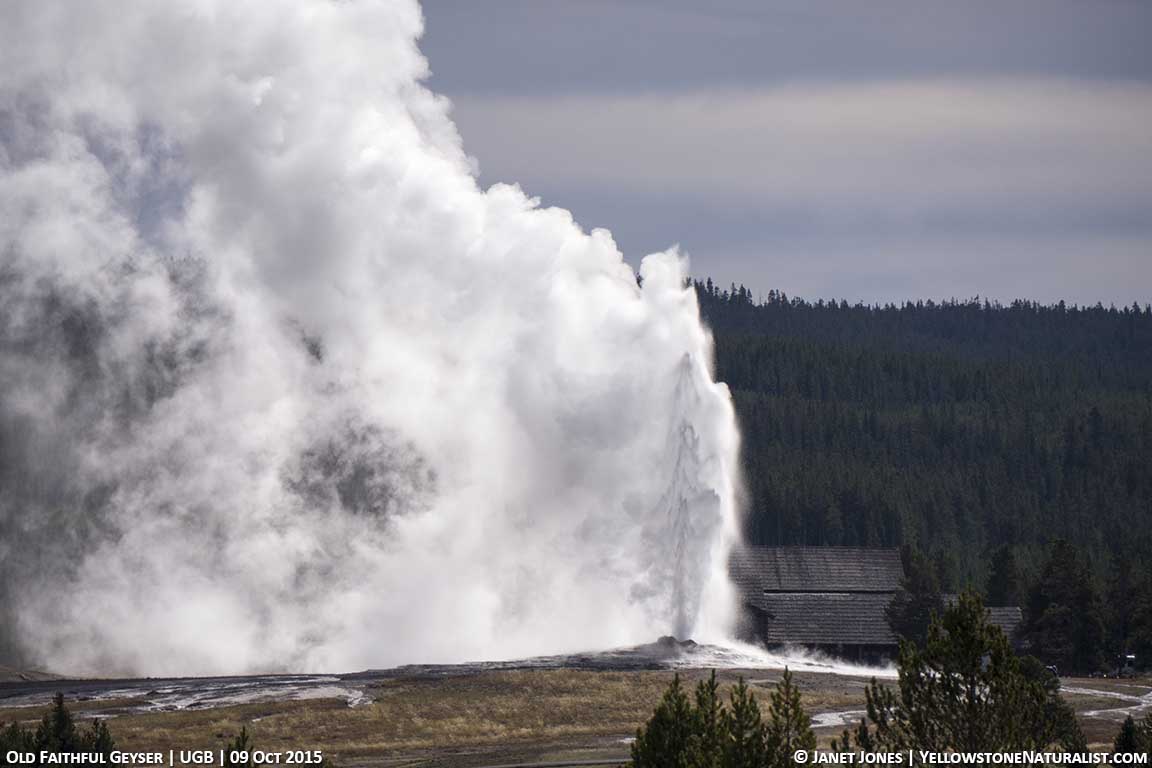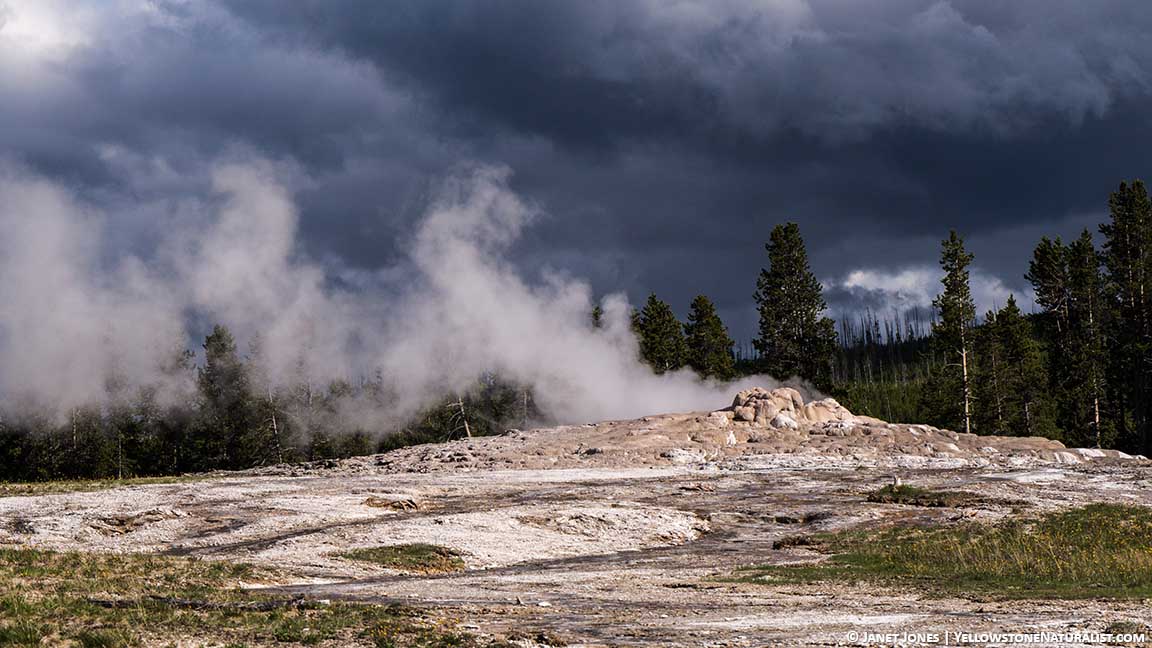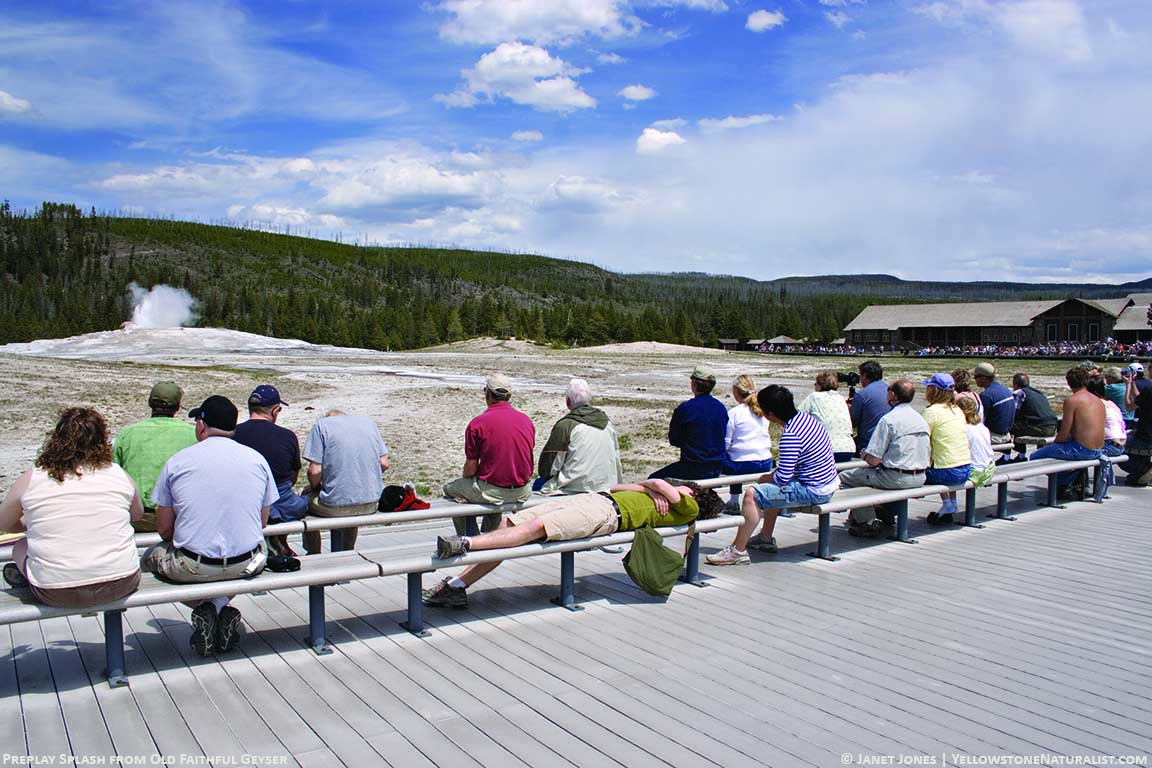Get to know Old Faithful Geyser
HAPPY NEW YEAR!
People that know me understand that I’m happiest with many projects on my plate. At times that helps this site, and at other times causes me to have continual pauses in posts. One of my goals for 2019 is to post more consistently to the blog and adding in more pages. Having so many projects going means that the only way to keep everything moving forward is to plan and work ahead. And that’s precisely what I’ve done this last December. Each week (on Thermal Thursday), I’ll share information on a specific thermal feature. We’ll start off the series today with the Upper Geyser Basin, home to Old Faithful Geyser.
UPPER GEYSER BASIN
Yellowstone’s Upper Geyser Basin is one of the most unique pieces of land on the Earth. It’s home to hundreds of geysers – at least two thirds of the world’s geysers – in this small area. The highest concentration of large geysers is on Geyser Hill. The Upper Geyser Basin contains a couple of other geyser basins: Black Sand Basin and Biscuit Basin.
For geysers to exist, you need a special environment that includes heat, water, and geology that provides a plumbing system. We have that in Yellowstone.
Beneath the surface, geologists have determined through chemical analysis of the water that there are two upper water chambers and a third lower one. The two water chambers closer to the surface meet at about a line from Solitary Geyser over to Castle Geyser and out to Three Sisters Spring. The one goes out to Biscuit Basin and the other reaches as far as Lone Star Geyser. Through ground penetrating radar, they have determined the location of a smaller water chamber that makes Old Faithful Geyser what it is and is fed from lower water chambers. With increasing technology, it will be interesting to watch what more they learn in the future.
OLD FAITHFUL GEYSER
She is the star geyser of the world. If people from the far reaches of the world don’t know much about the American West, they do know about Yellowstone and Old Faithful. The impact Old Faithful has had on this world cannot be underestimated. The thermal features – starting with the remarkably reliable Old Faithful Geyser – inspired the idea of creating a National Park. Yellowstone, in turn, has inspired national parks throughout the US and the world. If visitors have one thermal feature they want to see, it’s Old Faithful.
There is a web cam where you can watch Old Faithful erupt from the comfort of your computer or phone. This webcam has operators that know the thermal features well and will zoom in on them from time to time, making sure they catch that next eruption of Old Faithful. Predictions are posted when the Visitor Center is open. You can also find a prediction over on Geyser Times as well as the time of the last eruption.
BEFORE AN ERUPTION
If you know when the last eruption occurred, just add an hour and a half to that and give yourself a “window” of 20 minutes – that’s 10 minutes on either side of the time you just determined. Then you get a taste of geyser gazing which includes patience while watching for behavior of a pool, or in this case, rock pile, to change. Like many geysers, Old Faithful has some pre-play action where it looks like it might be starting. The splash that reaches above the geyser cone gives everyone watching hope, and then disappears. However, this means things are getting ready. Often, Old Faithful’s eruption usually happens within 10 minutes of the first pre-play splash.
As the water below ground heats up, parts of it will turn to steam…bubbles. It’s like boiling water on the stove. At first you see tiny bubbles that just sit on the bottom of the pan. They aren’t big enough to overcome the weight of the water and often will collapse. But then a few start to rise to the surface. Then larger ones rise. With Old Faithful, and with many geysers, the water rises through a large tube-like crack in the rock that usually has a constriction (the plumbing system). If a steam bubble is large enough, it will push the water above it up and out. That’s your pre-play splash. There might be quite a few of these splashes before one of them is the real eruption.
AN OLD FAITHFUL ERUPTION
The eruption starts like a preplay splash, but the column of water is sustained and slowly climbs in height. When enough water (weight) has been lifted from the system, the column of water rockets to full height of about 125-150 feet.
This column of water will hold for a brief time – about 20 to 30 seconds which is your chance to get the best photos. Then the water descends to a lower height where Old Faithful will play out for the rest of the 3-4-minute eruption. At this point, rangers and the camera operators and watching to see how the eruption ends. If it abruptly stops, and is less than 3 minutes, that’s a “short” eruption. If it just slowly dwindles down out of sight and takes longer than 3 minutes, then it’s a “long” eruption. This is important in determining the prediction for the next eruption.
PREDICTING OLD FAITHFUL
Park rangers regularly figure averages for the eruptions to make sure that at least 90% of the eruptions fall within the prediction window. If they don’t reach that amount, then they either need to adjust the time allowed between eruptions or adjust how large the window of opportunity is. You can predict Old Faithful as well!
While the next eruption can be predicted, it’s not a true prediction. If it were, then we would have a longer-term schedule and could tell you when to arrive to see an eruption midday in a couple of weeks. Old Faithful is fairly regular, but she IS a geyser. Geysers do as they will and always keep us guessing. So, while you have a 90% chance of seeing an eruption in the 20 minute window of opportunity given, there’s still a 10% chance that it could erupt before or after that window.
Park rangers and researchers have learned that Old Faithful has slowed over the decades. When Old Faithful was discovered, it was about an hour between eruptions. After local earthquakes, notably the Hebgen Lake earthquake and the Borah Peak earthquake, Old Faithful now erupts about every 94 minutes. So, in theory, Old Faithful may eventually stop someday, but it’s not likely to happen anywhere in the near future. As geyser gazers know all too well, we deeply miss some of the geysers that were so regular in the past. That means all of us need to take the opportunity now to appreciate the eruptions we enjoy now. Each eruption is slightly different, some taller, some lasting longer or shorter, yet they are all beautiful.




